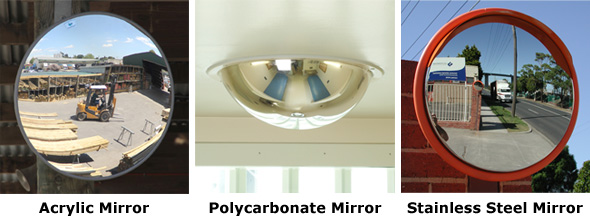What Material Should Be Used For A Convex Mirror Face?
22/11/2011 1:24 p.m.The options are Glass, Acrylic, Polycarbonate, Steel and Stainless Steel. So which material offers the best, clearest bright reflection as well as strength and durability?
GLASS:
This material is not recommended because it is easy to break which in itself is a safety risk.
ACRYILC:
Acrylic is a lot stronger than glass and has as good, if not better reflective properties as glass and therefore a lot safer material to use. Ideal for general use including traffic and pedestrian use.
POLYCARBONATE:
Polycarbonate is virtually unbreakable with good reflective properties but scratches more readily than either glass or acrylic. Recommended as most suitable for high security areas such as prisons and police stations, see www.correctionsmirror.com.
STEEL:
Steel is virtually unbreakable but does not polish up as well as acrylic or glass and is very susceptible to rusting which, if used in exterior situations such as a traffic mirror, will be of limited use and unsightly in a couple of years.
STAINLESS STEEL:
Stainless steel provides a better reflective image when compared to steel and is unbreakable. The key feature with this type of mirror face is that it will not corrode making it ideal for use as a traffic mirror.
Visit DuraVision De Luxe Stainless Steel Mirrors for an excellent example of high visibility stainless steel traffic mirrors.
DuraVision Convex Mirrors have the clearest, brightest reflection in the world with no distortion and quality without equal.

